Are you Colorado ready? SIXT.VN ensures your Colorado adventure is seamless, safe, and unforgettable. From navigating winter roads to exploring iconic landmarks, we’ve got you covered with essential travel tips and resources for an incredible experience.
1. What Does It Mean to Be “Colorado Ready” for Colorado Tourism?
Being “Colorado Ready” means preparing yourself, your vehicle, and your travel plans to safely and enjoyably experience all that Colorado has to offer, especially during winter. It involves understanding the potential hazards of Colorado’s diverse climate and terrain and taking proactive steps to mitigate those risks. Colorado tourism emphasizes preparedness to ensure visitors have a positive and safe experience.
Colorado preparedness is not just about gear; it’s about mindset. The Colorado Tourism Office advocates for travelers to be informed, respectful of the environment, and ready to adapt to changing conditions. This means checking weather forecasts, understanding altitude sickness, and being aware of wildlife encounters. By being mentally and physically prepared, visitors can make the most of their trip and contribute to the preservation of Colorado’s natural beauty. This proactive approach helps avoid accidents and ensures a smoother, more enjoyable experience for everyone.
2. What Are the Essential Automotive Checks Before Driving in Colorado?
Before embarking on a Colorado road trip, especially during winter, ensure your vehicle is in optimal condition for safe driving. Prioritize these checks:
- Windshield Wiper Fluid: Maintain a full reservoir of winter-specific fluid to ensure clear visibility in snowy or icy conditions.
- Heater/Defroster: Confirm that your heater and defroster are functioning properly to keep windows clear and maintain a comfortable cabin temperature.
- Wiper Blades: Replace worn wiper blades for effective snow and ice removal from your windshield.
- Radiator/Antifreeze: Check the antifreeze levels to prevent freezing and overheating, protecting your engine in extreme temperatures.
- Lights: Inspect all headlights, taillights, brake lights, and turn signals to ensure they are working correctly for optimal visibility.
- Fuel System: Ensure your fuel system is running efficiently to prevent breakdowns and maintain a full tank of gas, as gas stations may be sparse in remote areas.
- Ignition: Verify that your ignition system is reliable for starting your vehicle in cold weather.
- Exhaust System: Check for leaks in the exhaust system to prevent carbon monoxide poisoning, particularly important when idling in enclosed spaces.
- Tire Tread: Ensure tires have at least 3/16″ of tread for adequate traction on snowy or icy roads. Consider using snow tires or chains for added safety.
- Battery: Test your battery to ensure it can hold a charge in cold conditions, as cold weather can significantly reduce battery performance.
- Brakes: Inspect your brakes for proper function, including brake pads, rotors, and brake lines, to ensure reliable stopping power.
Regular automotive checks improve safety and prevent breakdowns, ensuring a smoother and more enjoyable Colorado trip.
3. What Safety Items Should I Carry in My Car in Colorado?
In addition to automotive checks, carrying essential safety items in your car is crucial for handling emergencies in Colorado’s unpredictable weather and terrain. Consider these items:
- Sturdy Scraper/Snow Brush/Snow Shovel: Essential for clearing snow and ice from your vehicle to ensure visibility and safe driving.
- Flashlight with Extra Batteries: A reliable flashlight is critical for signaling for help and navigating in low-light conditions. Crank-powered flashlights are a great alternative.
- Blanket or Sleeping Bag: Provides warmth and protection in case you get stranded or stuck in cold weather.
- Gallon Jug of Water: Staying hydrated is crucial, especially at high altitudes. Water can also be used for cleaning or cooling down the engine.
- First Aid Kit and Essential Medications: A well-stocked first aid kit can help treat minor injuries, and it’s essential to have any personal medications readily available.
- Tire Chains and Tow Strap: Tire chains provide extra traction on icy roads, and a tow strap can be used to help pull your vehicle out if it gets stuck.
- Jumper Cables: A must-have for jump-starting your car if the battery dies, especially in cold weather.
- Flares/Reflectors: Use flares or reflectors to signal for help and warn other motorists of your presence, especially in low-visibility conditions.
- Battery or Crank-Powered Radio: A radio can provide access to emergency broadcasts and weather updates in areas with limited cell service.
These safety items, along with common sense and caution, will help you handle unexpected situations and ensure a safer Colorado journey. According to research from the American Automobile Association (AAA), in 2023, having a well-stocked emergency kit significantly improves the chances of safely managing roadside incidents.
4. What Are Some Extra Items for Enhanced Safety in Colorado?
To further enhance your safety during a Colorado road trip, consider including these secondary items in your vehicle:
- Extra Set of Clothes: Pack extra layers, including a coat, hat, mittens, boots, and socks, to stay warm and dry in case you get wet or cold.
- Chemical Hand Warmers: These provide immediate warmth and can be crucial for preventing frostbite in extreme cold.
- Non-Perishable Snacks: High-energy snacks like granola bars, nuts, and dried fruit can help maintain your energy levels if you get stranded.
- Non-Clumping Kitty Litter/Sand: Use kitty litter or sand to create traction under your tires if you get stuck on ice or snow.
- Deck of Cards or Board Game: These can help pass the time and keep spirits up if you’re stuck waiting for assistance.
Having these extra items can significantly improve your comfort and safety in unexpected situations.
5. What Tips Should I Follow When Driving in Snowy Conditions in Colorado?
Driving in snow requires extra caution and adjustments to your driving technique. Consider these tips:
- Clear Your Car: Take extra time to clear your car of snow and ice before leaving. Ensure all windows, mirrors, and lights are clear for maximum visibility.
- Single Actions: When driving in winter weather, focus on one action at a time: accelerate, turn, or brake. Attempting multiple actions simultaneously can lead to loss of control.
- Lower Gear Downhill: When traveling downhill, switch to a lower gear and gently tap your brakes to avoid overheating your brakes and maintain traction.
- Maintain Momentum Uphill: Keep momentum when traveling uphill to avoid getting stuck. Avoid stopping or slowing down unnecessarily.
- Low Headlight Beams: When driving at night, use low headlight beams. High beams can reflect off the snow and reduce visibility.
- Slow Down: Driving too fast for conditions is the most common cause of accidents in winter weather. Reduce your speed and increase your following distance.
- Stay in Your Car: If you encounter a multi-car collision, stay in your car. It’s safer inside your vehicle than outside in the elements.
- Follow Left Lane Law: In Colorado, keep right except to pass. This helps maintain traffic flow and reduces the risk of accidents.
- Pay Attention to Signage: Look ahead and plan for abrupt turns or stops. Signage provides valuable information about road conditions and hazards.
- Wear Your Seat Belt: Always wear your seat belt for maximum safety in case of a collision.
- Never Drive Impaired: Driving under the influence of alcohol or drugs significantly increases the risk of accidents.
According to the Colorado Department of Transportation (CDOT), in 2022, following these tips can significantly reduce the risk of accidents and ensure a safer winter driving experience.
6. What Is the Importance of Driving Safely Around Trucks and Large Vehicles in Colorado?
Driving safely around trucks and other large vehicles is especially crucial in Colorado due to the challenging terrain and winter conditions. Large vehicles have unique handling characteristics and limitations that require extra caution from passenger vehicle drivers. The Colorado State Patrol emphasizes that awareness and defensive driving are key to preventing accidents involving commercial trucks.
Winter weather adds another layer of complexity, as trucks require more time to accelerate and slow down, especially on steep grades. Being aware of truck blind spots and avoiding sudden maneuvers around them can prevent serious accidents.
7. What Are the Blind Spots I Should Be Aware of When Driving Near Trucks?
Commercial trucks have large blind spots on all sides, making it difficult for drivers to see smaller vehicles. These blind spots include:
- Large areas on both sides of the truck
- The area directly in front of the truck
- The area directly behind the truck
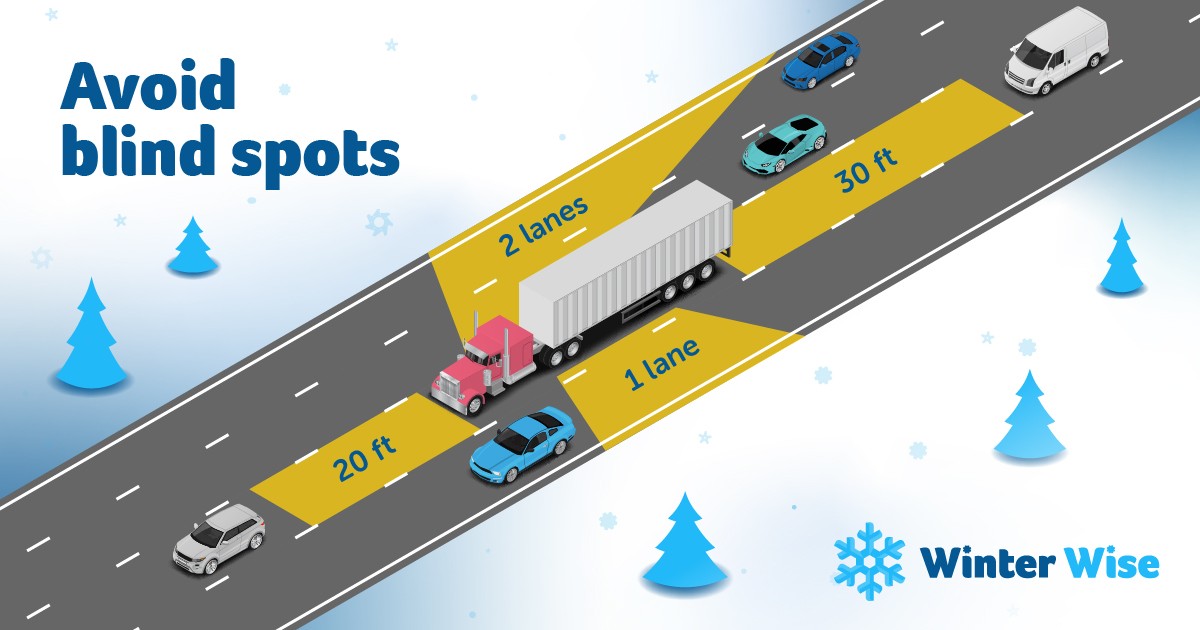 Truck Blind Spots
Truck Blind Spots
Avoid lingering in these blind spots and make sure the truck driver can see you at all times. If a truck driver needs to make a sudden maneuver, your visibility is critical to preventing accidents.
8. How Can I Drive Defensively Around Trucks in Colorado?
Defensive driving around trucks involves staying alert, maintaining a safe distance, and anticipating the truck driver’s actions. Follow these tips:
- Drive the Speed Limit: Adhere to posted speed limits and adjust your speed according to road conditions.
- Stay Alert: Pay attention to your surroundings and avoid distractions such as cell phones.
- Eliminate Distractions: Keep your focus on driving and avoid any activities that could divert your attention.
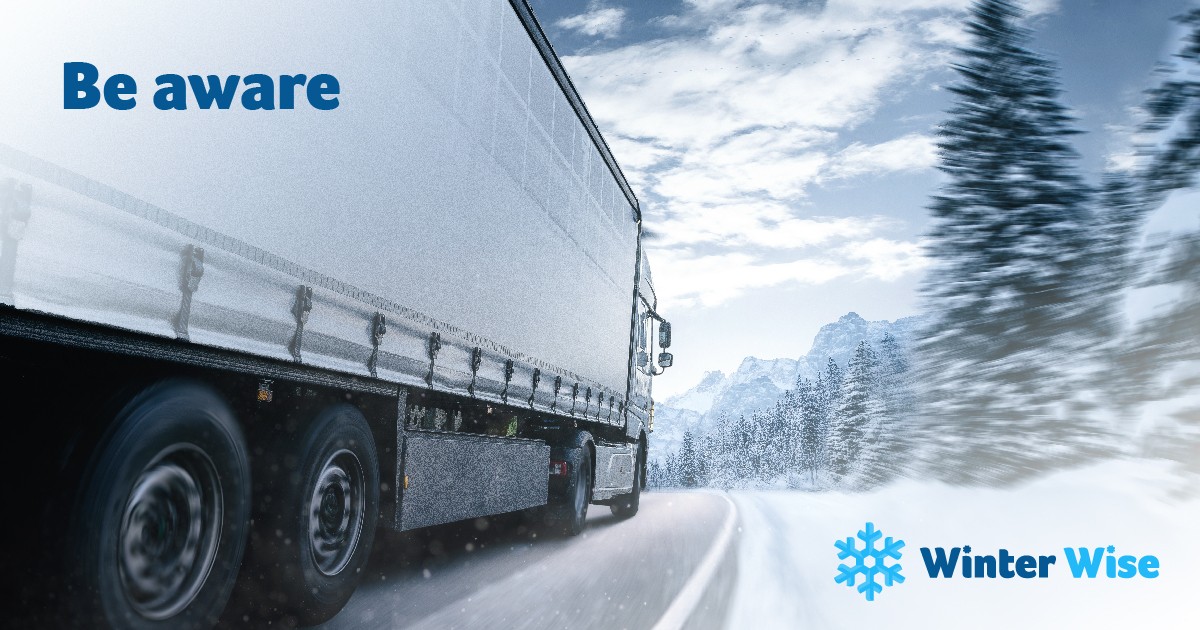 Defensive Driving Awareness
Defensive Driving Awareness
Giving truckers the courtesy of driving responsibly helps keep our economy moving and ensures safer roadways for everyone.
9. Why Do Trucks Need More Space in Winter Conditions?
Commercial trucks are bigger and slower than passenger vehicles, especially in winter conditions. It takes them more time to accelerate and slow down, particularly on steep grades. Give them plenty of space and avoid sudden moves. According to the Federal Motor Carrier Safety Administration (FMCSA), trucks need up to ten times longer to stop on wet or snowy roads compared to dry conditions.
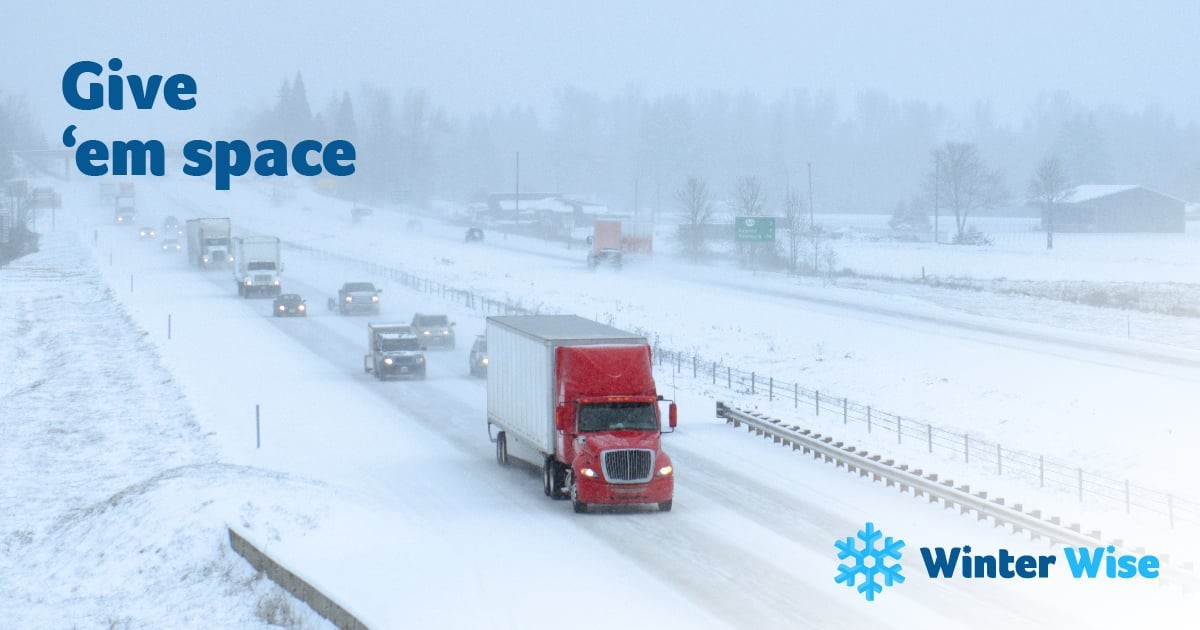 Truck Space Awareness
Truck Space Awareness
This extra space is essential to avoid collisions and ensure the truck driver has enough room to react to changing road conditions.
10. How Should I Pass a Truck Safely in Colorado?
When passing a large truck, do so on the left side and don’t linger alongside the truck in the driver’s blind spot. Pass quickly and safely, ensuring you have ample space before merging back into the lane.
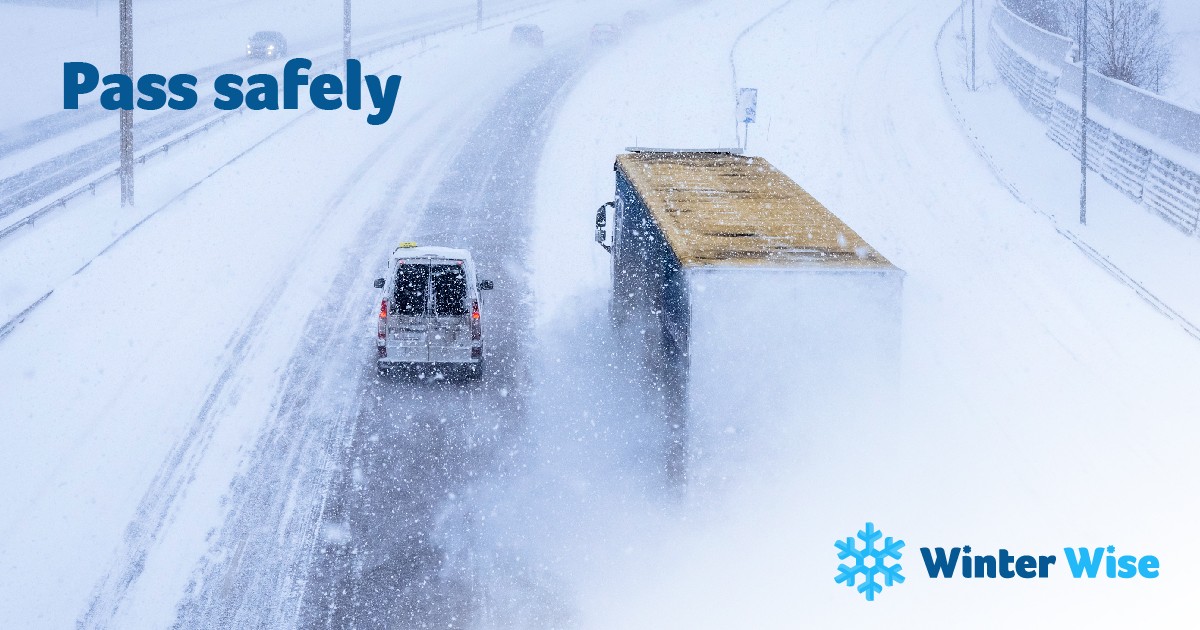 Safe Truck Passing
Safe Truck Passing
Avoid passing on the right side, as this is a larger blind spot for the truck driver. Always signal your intentions clearly and check your mirrors before making any lane changes.
11. Why Should I Avoid Cutting in Front of a Truck?
After passing a truck, don’t cut in front of them too quickly. It can take trucks the length of a football field to come to a complete stop — and even more in snowy conditions. Leave plenty of space to ensure the truck has enough room to brake safely.
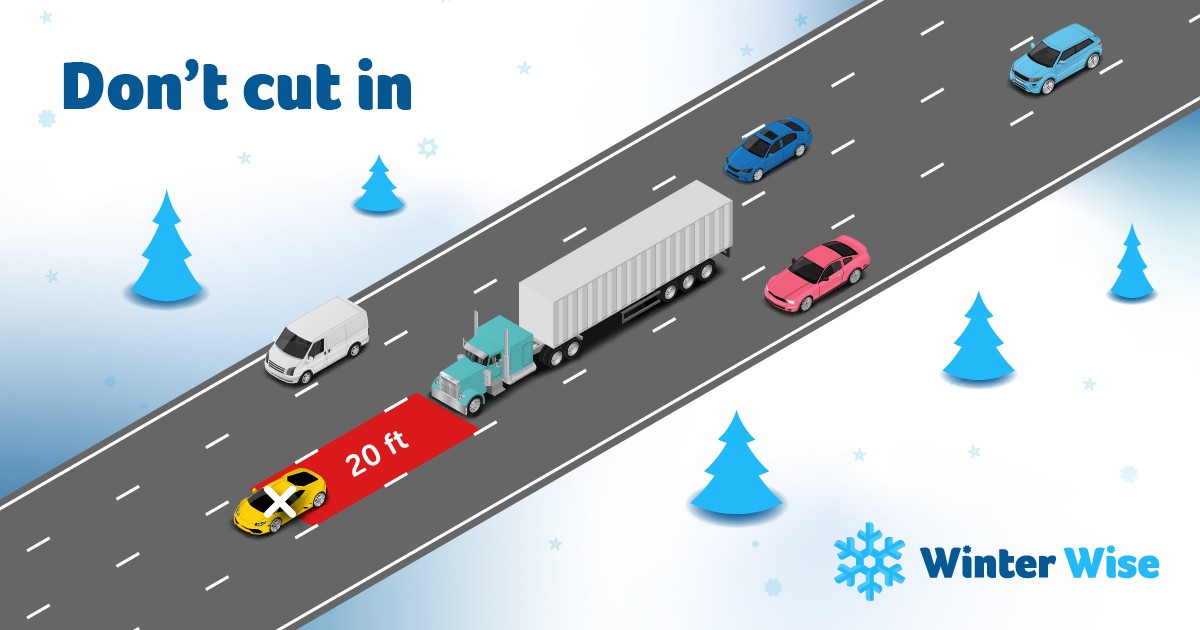 Avoid Cutting in Front of Trucks
Avoid Cutting in Front of Trucks
Cutting in front of a truck can create a dangerous situation and increase the risk of a collision.
12. How Far Back Should I Stay When Driving Behind a Truck?
When traveling behind a truck, stay back and out of the blind spot so that the driver knows you’re there. If the truck is using chains, the tires may kick up snow and other debris. Keeping a safe distance protects your vehicle and ensures the truck driver can see you.
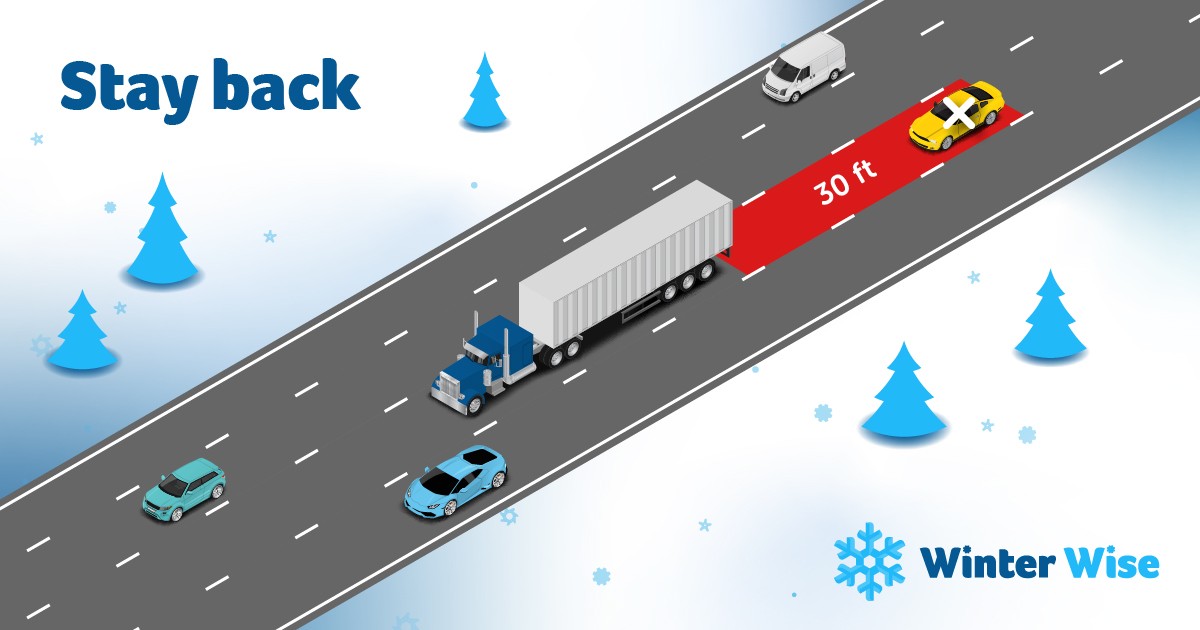 Safe Distance Behind Trucks
Safe Distance Behind Trucks
This is particularly important in winter conditions when visibility may be reduced and stopping distances are increased.
13. Planning Your Colorado Adventure with SIXT.VN
Planning a trip to Colorado can be exciting, but it also requires careful preparation. SIXT.VN offers a range of services to help you plan and execute your adventure seamlessly.
13.1. Personalized Travel Consultation
SIXT.VN provides personalized travel consultations to help you create an itinerary tailored to your interests and preferences. Whether you’re interested in skiing, hiking, exploring national parks, or experiencing local culture, our experts can help you design the perfect trip.
13.2. Airport Transfer Services
Arrive in Colorado stress-free with SIXT.VN’s reliable airport transfer services. We offer comfortable and convenient transportation from the airport to your hotel or destination, ensuring a smooth start to your trip.
- Denver International Airport (DIA): Our drivers will meet you at the airport and assist with your luggage, providing a hassle-free transfer to your accommodation.
- Eagle County Regional Airport (EGE): Convenient transportation to Vail, Beaver Creek, and other nearby ski resorts.
13.3. Hotel Booking Assistance
SIXT.VN offers hotel booking assistance, providing a range of options to suit your budget and preferences. We can help you find the perfect accommodation, from luxury resorts to cozy mountain lodges.
- Luxury Resorts: Experience world-class amenities and stunning mountain views.
- Budget-Friendly Hotels: Comfortable and affordable options for cost-conscious travelers.
- Mountain Lodges: Enjoy a cozy and authentic Colorado experience.
13.4. Guided Tours and Activities
Explore Colorado with SIXT.VN’s guided tours and activities. We offer a variety of options to suit your interests, from scenic drives and hiking tours to cultural experiences and adventure activities.
- Rocky Mountain National Park Tours: Discover the breathtaking beauty of the Rocky Mountains with our expert guides.
- Skiing and Snowboarding Packages: Enjoy world-class skiing and snowboarding with our comprehensive packages.
- Cultural and Historical Tours: Explore Colorado’s rich history and vibrant culture with our guided tours.
13.5. Car Rental Services
Explore Colorado at your own pace with SIXT.VN’s car rental services. We offer a wide selection of vehicles to suit your needs, from compact cars to SUVs with four-wheel drive.
- Compact Cars: Ideal for navigating city streets and exploring local attractions.
- SUVs: Perfect for tackling mountain roads and carrying ski equipment.
- Four-Wheel Drive Vehicles: Essential for winter driving and accessing remote areas.
SIXT.VN helps ensure you are Colorado ready, providing the resources and support you need for a memorable and safe adventure.
14. Navigating Colorado’s Unique Challenges
Colorado’s diverse landscape and climate present unique challenges for travelers. Being aware of these challenges and taking proactive steps to address them is essential for a safe and enjoyable trip.
14.1. Altitude Sickness
Colorado’s high altitude can cause altitude sickness, especially for visitors arriving from lower elevations. Symptoms can include headache, nausea, fatigue, and dizziness.
- Acclimatize Slowly: Spend a few days at a lower elevation before ascending to higher altitudes.
- Stay Hydrated: Drink plenty of water to help your body adjust to the altitude.
- Avoid Alcohol and Caffeine: These can dehydrate you and worsen symptoms of altitude sickness.
- Eat Light Meals: Avoid heavy, greasy foods that can be difficult to digest at high altitudes.
14.2. Weather Extremes
Colorado’s weather can change rapidly, from sunny skies to blizzards in a matter of hours. Be prepared for all types of weather, especially during winter.
- Check the Forecast: Monitor weather forecasts regularly and be prepared for changing conditions.
- Dress in Layers: Wear layers of clothing that can be easily added or removed to adjust to temperature changes.
- Pack for All Conditions: Bring waterproof and windproof outerwear, as well as sunscreen and sunglasses.
14.3. Wildlife Encounters
Colorado is home to a variety of wildlife, including bears, mountain lions, and elk. Be aware of your surroundings and take precautions to avoid encounters.
- Store Food Properly: Store food in airtight containers and avoid leaving food scraps or trash in open areas.
- Make Noise: Make noise while hiking to alert wildlife to your presence.
- Keep a Safe Distance: Maintain a safe distance from wildlife and never approach or feed animals.
14.4. Road Conditions
Colorado’s mountain roads can be challenging, especially during winter. Be prepared for snow, ice, and steep grades.
- Check Road Conditions: Monitor road conditions and closures before you travel.
- Use Winter Tires or Chains: Consider using winter tires or chains for added traction on snowy or icy roads.
- Drive Slowly and Carefully: Reduce your speed and increase your following distance in adverse conditions.
By addressing these unique challenges, you can ensure a safer and more enjoyable Colorado adventure.
15. Frequently Asked Questions (FAQs) About Being Colorado Ready
Here are some frequently asked questions about being Colorado ready:
15.1. What Does “Colorado Ready” Mean?
“Colorado Ready” means being prepared for the unique challenges and conditions that Colorado presents, including winter driving, high altitude, and unpredictable weather.
15.2. What Should I Check on My Car Before Driving in Colorado?
Check your windshield wiper fluid, heater/defroster, wiper blades, radiator/antifreeze, lights, fuel system, ignition, exhaust system, tire tread, battery, and brakes.
15.3. What Safety Items Should I Carry in My Car in Colorado?
Carry a sturdy scraper/snow brush/snow shovel, flashlight with extra batteries, blanket or sleeping bag, gallon jug of water, first aid kit and essential medications, tire chains and tow strap, jumper cables, flares/reflectors, and a battery or crank-powered radio.
15.4. What Should I Do If I Get Stuck in the Snow?
Stay calm, clear snow from around your tires, put sand or kitty litter under your tires for traction, and gently rock your car back and forth to try to get unstuck.
15.5. How Can I Avoid Altitude Sickness?
Acclimatize slowly, stay hydrated, avoid alcohol and caffeine, and eat light meals.
15.6. What Should I Do If I Encounter Wildlife?
Stay calm, make noise, maintain a safe distance, and never approach or feed animals.
15.7. How Can SIXT.VN Help Me Plan My Colorado Trip?
SIXT.VN offers personalized travel consultations, airport transfer services, hotel booking assistance, guided tours and activities, and car rental services.
15.8. What Are the Best Times to Visit Colorado?
The best times to visit Colorado depend on your interests. Summer is ideal for hiking and outdoor activities, while winter is perfect for skiing and snowboarding.
15.9. What Are Some Must-See Attractions in Colorado?
Some must-see attractions in Colorado include Rocky Mountain National Park, Garden of the Gods, Pikes Peak, and the historic town of Aspen.
15.10. How Can I Stay Updated on Road Conditions in Colorado?
Monitor road conditions through the Colorado Department of Transportation (CDOT) website or mobile app.
16. Links to Internal Pages to Enhance your Colorado Trip.
To further help you in planning your Colorado trip, take a look at these articles
- Denver travel guide
- Colorado travel guide
- Mountain driving guide
Conclusion
Being “Colorado Ready” is essential for ensuring a safe, enjoyable, and memorable trip. From preparing your vehicle and packing essential safety items to understanding the unique challenges of Colorado’s landscape and climate, taking proactive steps is key. SIXT.VN is here to assist you with every aspect of your trip, from personalized travel consultations and airport transfers to hotel bookings and guided tours. Contact SIXT.VN today to start planning your Colorado adventure and experience the best that this beautiful state has to offer. Address: 260 Cau Giay, Hanoi, Vietnam. Hotline/Whatsapp: +84 986 244 358. Website: SIXT.VN.



